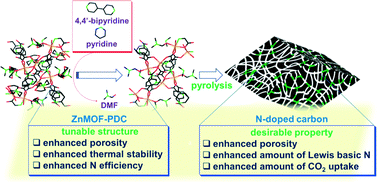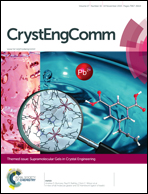Enhanced CO2 capture capacities and efficiencies with N-doped nanoporous carbons synthesized from solvent-modulated, pyridinedicarboxylate-containing Zn-MOFs†
Abstract
This paper describes the pyrolysis of pyridinedicarboxylate-containing Zn-based metal–organic frameworks (MOFs) to form nanoporous carbons with accessible N dopants to adsorb CO2. The optimal materials were synthesized using N-heterocycle additives to control the amount of coordinated DMF in the base MOF structure, thereby increasing its thermal stability prior to pyrolysis.

- This article is part of the themed collection: Metal-Organic Frameworks and Hybrid Materials

 Please wait while we load your content...
Please wait while we load your content...